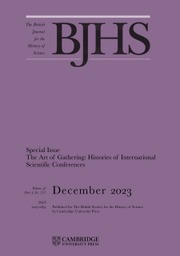American women are living through a moment of political reckoning in health care. In the wake of the Supreme Court’s Dobbs v. Jackson decision in 2022, which overturned Roe v. Wade and led to the loss of abortion access across much of the country, long-standing questions of bodily autonomy, medical authority and reproductive health delivery have gained renewed urgency. Who gets to decide what women can and cannot do with their bodies, particularly when it comes to reproductive care? How, where and by whom should that care be performed? These questions are far from new, but in the current landscape, the demands of health consumers and activists can seem almost quaint in their simplicity. The late, great, bombastic feminist health journalist Barbara Seaman would have called this the pursuit of ‘pelvic autonomy’ – and she did, fifty years ago.
In Looking through the Speculum, Judith A. Houck revisits the women who first asked these questions and proposed creative solutions to the crisis in health care a half-century ago. The book is both a long-awaited and definitive synthesis of the women’s health movement as a whole and a novel deep dive into some of its more neglected and complicated elements. Grounded in the grass roots – and viewed, as the title suggests, through the speculum itself – Houck’s book offers something like a historical and historiographic well-woman exam: attentive, probing and committed to uncovering what lies beneath the surface.
Houck presents a carefully crafted and beautifully organized narrative of the movement’s history. In a series of paired chapters, she moves from a general history of feminist health activism to specific studies of abortion care provision, the identity politics of lesbian health and the movement’s struggle to fully translate its theories into practice when it came to issues of race and class.
Chapters 1 and 2 set the stage (or, rather, exam table), showing how activists in the 1970s envisioned more woman-centered and affirming health spaces as a radical contrast to the paternalistic, sexist and often dehumanizing baseline of mainstream medicine. They attempted to build practices and counterinstitutions of their own as alternatives. This is the genesis of ‘self-help’ gynaecology, featuring the now-iconic DIY cervical self-exams and the broader project of reclaiming bodily knowledge. The spirit of self-help was also adopted within newly founded feminist clinics. Even if they were formal health care providers in (re-envisioned) clinical spaces, they reconciled radical ideals within regulatory and institutional realities at scale.
Chapters 3 and 4 focus on abortion, particularly on the new post-Roe tension between desiring woman-controlled practices on the one hand and establishing formalized clinical access to serve a wider population on the other. Houck’s focus on the Chico Feminist Women’s Health Center in Chico, California as a revealing case study is a particular strength of the book, allowing readers to see the legalization and expansion of abortion, amid the immediate cultural backlash to it, play out in real time on the ground.
Chapters 5 and 6 examine the role of lesbians and the now largely forgotten concept of lesbian health in the movement. Houck shows how lesbian activists brought their own concerns and critiques to the table, expanding the scope of feminist health beyond fertility control and traditional reproductive health care. As with the Chico chapter, the case study of San Francisco’s Lyon–Martin Women’s Health Services is revealing, while also providing a methodological masterclass in institutional history.
Finally, following thematic threads laid out in the previous pair, Chapters 7 and 8 centre the experiences and leadership of women of colour in the movement. Houck traces the emergence of a broader reproductive-justice framework that challenged health feminists to follow the personal, to the political, to the structural. These chapters bring the reader well into the 1980s, into the twilight of the ‘original’ women’s health movement, at a moment when (somewhat tragically, like ships passing in the night) women of colour were turning towards self-help as a vital form of praxis.
Looking through the Speculum is meticulously researched, drawing on a huge base of sources that includes organizational records, ephemera, political writings and, perhaps most importantly, oral-history interviews. Houck spoke with over seventy-five activists over more than a decade, chronicling their stories. This effort and personal testimony reveal themselves in the rich texture of this history, which so effectively captures the politics and personal feelings of the movement’s participants.
Houck’s decision to focus on California is another brilliant move. Histories of the women’s health movement in the United States have frequently centred Boston, following the familiar origin story of the Boston Women’s Health Book Collective and its guidebook, Our Bodies, Ourselves. Other accounts – including my own – have privileged the New York-based journalists, especially Barbara Seaman, who brought the tenets of health feminism to a wider public audience via their writing and speaking. The prominence of the National Women’s Health Network, originally founded as ‘The Women’s Health Lobby’ in Washington, DC, also skewed the framing towards the Northeast. In reality, as Houck has so ably demonstrated, perhaps California – land of Carol Downer and home to so many feminist clinics – was the true epicentre of the movement. The view from the West Coast is both fascinating and rich.
Maybe today women are sharing their gynaecology grievances with TikTok followers rather than with CR sisters gathered in a feminist bookstore. Maybe trans health, rather than lesbian health, now anchors discussions about identity and access to compassionate care. Maybe we’re mailing abortion pills instead of building clinics. But fundamentally, these histories do not merely rhyme; they repeat. For better or for worse, in many ways, women’s health in the 2020s feels stuck in the 1970s. We would be wise to study the advocacy that flourished in that era, learning from the women’s health movement, genital warts and all.


